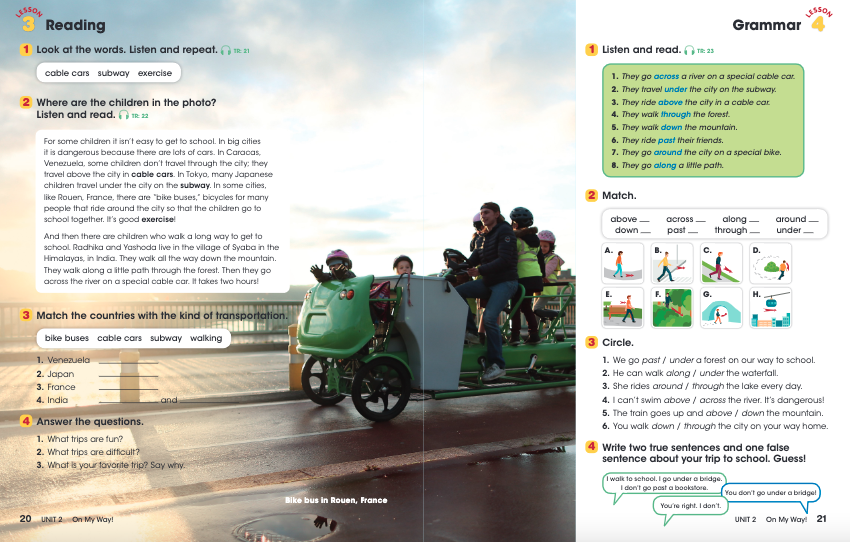As a teacher, do you ever have that feeling of mild panic that you’ve gone in too high with a text? I certainly have. Oh, no, you think, the students are out of their depth here. Should I abandon this or persevere and hope we get through it somehow? You decide to let them struggle on, because it’s part of the prepared sequence of lessons. But the whole experience is deeply unsatisfying. What’s more, it makes you fearful of the next time it might happen.
In this post I’d like to allay some of those fears and outline simple strategies we can use to help students navigate challenging reading texts. The underlying principle behind the strategies is to involve learners more before and during reading rather than leaving them to negotiate the text alone. I’m going use a reading lesson from Level 3 (A1 – moderate beginners) of the Primary series LOOK as a reference point (see the page below).
Strategy 1 – Make them want to read the text
First, read the text yourself and think about what the purpose of the text is and what you learned from it.
You can see this text is about how kids in different countries travel to school. You learned that for some kids it’s not an easy journey. So based on this you now need to think of ways that will give the students both a destination and a sense of anticipation and excitement before reading the text.
Ask each student to write down one way that kids travel to school. They read them out. Then you say, OK let’s see how many of these we can find in the text. This question can go alongside the focus question on the page, asking where the children in the photo are.
Strategy 2 – Animate the reading with mime and expression
Read the text aloud to the students, asking them to follow as you read. Animate your delivery using mime and facial expressions. You’ll need to think about how you’ll do this before the class. For example, how could you animate the second sentence “ln big cities it is dangerous because there are a lot of cars”?
One way would be to mime biting your fingernails on the word ‘dangerous’ and then mime someone waiting to cross a busy road with cars whizzing by (you can follow them with your eyes and make car zooming noises).
Strategy 3 – Ask and encourage questions during reading
As you read, ask questions to check comprehension and to keep the learners engaged. Think about questions you could ask to stimulate engagement after the third sentence, “In Caracas, Venezuela, some children don’t travel through the city; they travel above the city in cable cars”.
The questions should be simple. For example, ‘Why don’t they travel through the city?’ Or, ‘Can someone draw a cable car on the board?’ etc.
Also, encourage questions from the learners and praise them when they ask questions. This gets them into the habit of asking. Questions can be open e.g. ‘Any questions?’ or more targeted e.g. ‘Does anyone have a question about the subway?’
Strategy 4 – Repeat the text
Check the answers to the pre-reading questions. Then get them to listen and read again. This time use the pre-recorded version of the text. Listening and reading are fantastic for building reading speed and for helping with word recognition. As the students read, ask them to annotate the text with a ? for any words or sentences they don’t understand. Then get them to ask their questions at the end.
Finally, now that you’ve accompanied them on this journey through the text, learners should be much better equipped to answer the ‘after reading’ comprehension and personalization questions. (see questions 3 and 4 below)



